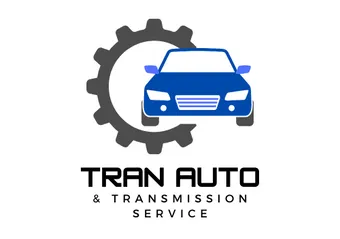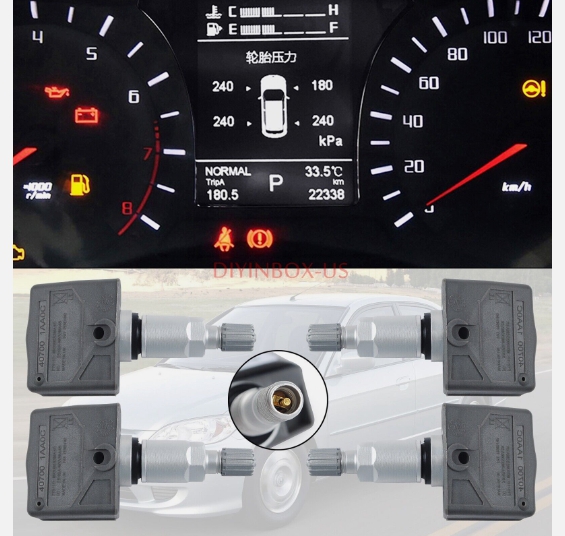1. Introduction
Car safety is a top priority for drivers and manufacturers alike. With advancements in technology, there are now more tools than ever to ensure the safety of vehicles on the road. One such technology is TPMS, or Tire Pressure Monitoring System. This system monitors air pressure in the tires and alerts drivers when the pressure is too low, helping to prevent accidents and improve fuel efficiency. Understanding the importance of car safety and the role that TPMS technology plays in maximizing it is crucial for all drivers. In this ultimate guide, we will explore the ins and outs of TPMS technology and how it can help keep you safe on the road.
2. Understanding the importance of car safety
Understanding the importance of car safety is essential for all drivers. Every time we get behind the wheel, we are responsible for our own safety as well as the safety of those around us. Car accidents can have devastating consequences, and many of these accidents could have been prevented if proper safety measures were in place.
One of the most critical aspects of car safety is maintaining the correct tire pressure. Underinflated tires not only decrease fuel efficiency but also increase the risk of accidents. This is where TPMS technology comes into play. By constantly monitoring tire pressure and alerting drivers when it is too low, TPMS helps ensure that tires are always at their optimal level, reducing the chances of blowouts and accidents.
In the next section, we will dive deeper into the functionality of TPMS technology, discussing how it works and the benefits it provides to car safety. Stay tuned to learn more about this crucial aspect of vehicle safety.
3. An in-depth look at TPMS technology
In this section, we will take a closer look at the functionality of TPMS technology and explore how it works to enhance car safety. TPMS, short for Tire Pressure Monitoring System, is a state-of-the-art system designed to constantly monitor the pressure of each tire on a vehicle.
TPMS consists of sensors, typically located inside the tire, which continuously monitor the air pressure. These sensors communicate with a central control module, which then alerts the driver if the pressure in any of the tires drops below a predetermined threshold. This timely notification allows drivers to take immediate action, such as inflating the tire to the recommended pressure or inspecting it for punctures or leaks.
By providing real-time monitoring and notifications, TPMS helps prevent accidents caused by underinflated tires. It allows drivers to take proactive measures to maintain proper tire pressure, ensuring optimal performance, fuel efficiency, and overall safety on the road.
In the following section, we will explore the specific benefits of TPMS technology and how it can further enhance car safety.
4. How TPMS technology works
Now that we understand the basics of TPMS technology and how it enhances car safety, let’s delve deeper into how this system actually works.
The TPMS sensors within each tire are responsible for continuously monitoring the tire pressure. These sensors use advanced technology to measure the pressure and transmit the data to the central control module in real-time. The control module then analyzes the data and compares it to a database of recommended pressure levels for each tire.
If the pressure in any of the tires drops below the predetermined threshold, the control module triggers an alert. This alert is usually displayed on the dashboard, notifying the driver about the specific tire that requires attention. Some advanced TPMS systems even go a step further by providing detailed information about the exact pressure level in each tire.
Ultimately, TPMS technology provides drivers with invaluable information about their tires’ pressure levels, allowing them to take immediate action and prevent potential accidents or damage caused by underinflated tires.
Stay tuned for the next section, where we will explore the specific benefits of TPMS technology and how it can further enhance car safety.
5. The benefits of utilizing TPMS technology
Utilizing TPMS technology comes with a multitude of benefits that can significantly enhance car safety. Let’s explore some of these advantages in detail.
Firstly, TPMS technology helps to improve fuel efficiency. By monitoring tire pressure in real-time, drivers can ensure that their tires are properly inflated, leading to reduced rolling resistance and increased fuel economy. Underinflated tires can cause the engine to work harder, resulting in higher fuel consumption.
Secondly, TPMS technology helps to prolong the lifespan of your tires. When tires are properly inflated, they wear down evenly, leading to a longer lifespan. Underinflated or overinflated tires, on the other hand, wear down unevenly and can result in premature tire failure.
Thirdly, TPMS technology enhances overall driving performance and handling. Properly inflated tires provide optimal traction and grip on the road, especially during adverse weather conditions. This improves the vehicle’s stability, control, and braking ability, ensuring a safer driving experience.
In the upcoming section, we will delve into the different types of TPMS systems available in the market and how to choose the right one for your vehicle.
6. Implementing TPMS technology in your vehicle
Implementing TPMS technology in your vehicle is a straightforward process that can greatly enhance your car’s safety. There are a few different types of TPMS systems available in the market, each with its own benefits and features.
1. Direct TPMS: This system uses sensors to monitor the tire pressure in real-time and provides accurate readings. It is the most reliable and accurate type of TPMS system available. Direct TPMS systems are usually pre-installed in newer vehicles, but they can also be retrofitted into older models.
2. Indirect TPMS: This system uses the car’s existing sensors, such as the ABS, to indirectly monitor tire pressure. While indirect TPMS systems are less accurate than direct ones, they can still provide valuable information about tire pressure. Indirect TPMS systems are typically found in older vehicles.
When choosing the right TPMS system for your vehicle, consider factors such as accuracy, ease of installation, and compatibility with your car’s make and model. Additionally, it’s important to ensure that the TPMS system complies with local regulations and standards.
Once you’ve selected the appropriate TPMS system, it’s time to install it. Depending on the system you choose, installation can be a DIY project or require the assistance of a professional. Following the manufacturer’s instructions, mount the sensors onto each tire’s valve stem and connect them to the system’s control unit.
After installation, it’s important to calibrate and program the TPMS system according to your vehicle’s specifications. This typically involves entering the recommended tire pressure values into the system and allowing it to detect and sync with each sensor.
By implementing TPMS technology in your vehicle, you can enjoy the benefits of improved fuel efficiency, prolonged tire lifespan, and enhanced driving performance and handling. The next time you hit the road, you can have peace of mind knowing that your car is equipped with the latest safety technology to keep you and your passengers safe.
7. Common misconceptions about TPMS technology
Common misconceptions about TPMS technology
Despite the numerous benefits and advancements in TPMS technology, there are still some common misconceptions that prevail among car owners. It is important to address these misconceptions to ensure that individuals have accurate information when it comes to enhancing their car’s safety.
Misconception 1: TPMS is only useful for maintaining tire pressure
While it is true that TPMS technology helps monitor tire pressure, its benefits go beyond just maintaining proper inflation. TPMS systems also play a crucial role in preventing tire blowouts, reducing the risk of accidents, and enhancing overall driving safety.
Misconception 2: TPMS is only for new cars
While many newer vehicles come equipped with TPMS systems, it can also be retrofitted into older models. This means that even if your car doesn’t have built-in TPMS, you can still enjoy the benefits of this technology by installing an aftermarket system.
Misconception 3: TPMS is expensive and not worth the investment
While there is an upfront cost involved in purchasing and installing a TPMS system, the long-term benefits far outweigh the initial investment. TPMS technology can help extend the lifespan of your tires, improve fuel efficiency, and keep you safe on the road, making it a valuable investment for any car owner.
By debunking these misconceptions and understanding the true value of TPMS technology, car owners can make informed decisions about implementing this safety feature in their vehicles. With the ability to accurately monitor tire pressure and detect potential issues, TPMS technology remains an essential tool in maximizing car safety.
8. The future of car safety with TPMS technology
The future of car safety with TPMS technology
As technology continues to advance at a rapid pace, so does the potential for further improvements in car safety. TPMS technology is no exception to this trend, and the future holds exciting possibilities for enhancing the safety features and capabilities of this system.
One of the key areas of development for TPMS technology is the integration with other safety systems in the vehicle. With advancements in vehicle-to-vehicle communication and autonomous driving, TPMS systems can potentially communicate with other cars on the road to share real-time data about tire conditions. This can help create a network of connected vehicles that work together to prevent accidents and improve overall road safety.
Additionally, advancements in sensor technology can further refine the accuracy and reliability of TPMS systems. Smaller and more sensitive sensors can be developed, allowing for even more precise monitoring of tire pressure and the early detection of potential issues. This can help car owners take proactive measures to address any problems before they escalate into safety hazards.
Furthermore, the future of TPMS technology may involve the incorporation of artificial intelligence and machine learning algorithms. These technologies can analyze vast amounts of data collected by TPMS systems to identify patterns, predict tire failures, and provide more accurate and personalized recommendations for maintaining optimal tire performance and safety.
As we look ahead, it is clear that TPMS technology will continue to play a vital role in maximizing car safety. With ongoing advancements and exciting possibilities on the horizon, car owners can rest assured that TPMS technology will continue to evolve and improve to meet the ever-changing demands of the road. By embracing these advancements, we can pave the way towards a future where accidents caused by tire issues become a thing of the past.
9. Conclusion: Taking control of your car’s safety with TPMS
In conclusion, TPMS technology offers a multitude of benefits for maximizing car safety. From its ability to monitor tire pressure and detect potential issues, to advancements in integration and sensor technology, TPMS systems are becoming increasingly sophisticated and effective.
By embracing TPMS technology and staying informed about its advancements, car owners can take control of their car’s safety. Regularly checking tire pressure, addressing any issues promptly, and utilizing the features and capabilities of TPMS systems can significantly reduce the risk of accidents caused by tire problems.
As technology continues to evolve, the future of TPMS holds even more promise. Integration with other safety systems, advancements in sensor technology, and the potential incorporation of artificial intelligence and machine learning will further enhance the effectiveness and accuracy of TPMS technology.
So, don’t overlook the importance of TPMS when it comes to ensuring a safe and secure driving experience. Investing in a quality TPMS system and staying vigilant about tire maintenance will help you maximize car safety and contribute to a future with fewer accidents caused by tire issues. Remember, safety starts with you and your car’s tires.




